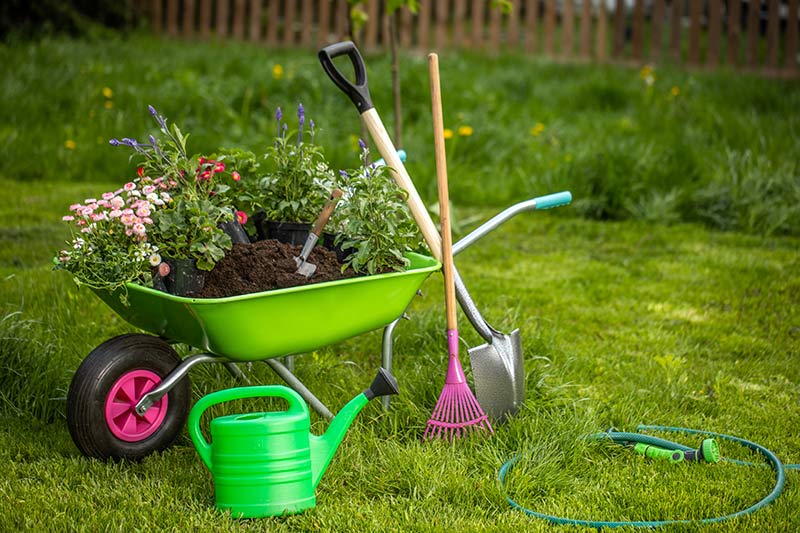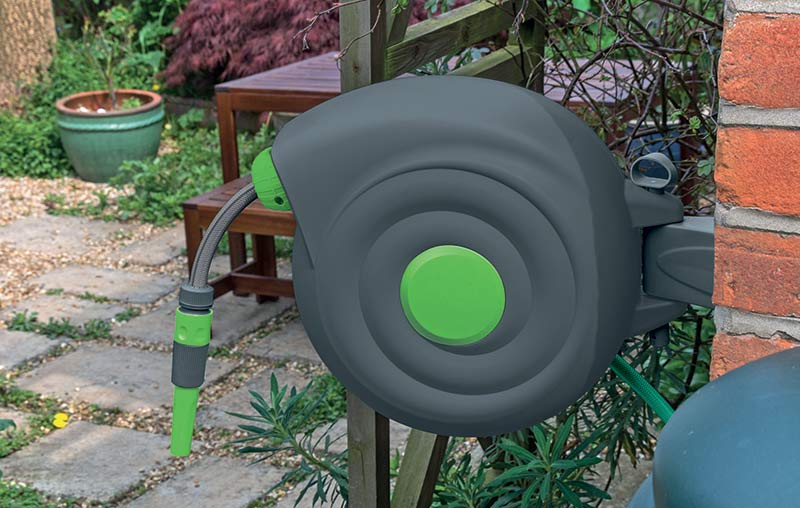What is the most useful garden tool?
Planning a bit of a garden update? It's wise to ensure you have all the essentials before you begin. But which tools do you really need to get going?

Gardening gloves
There's nothing worse than starting on your grounds maintenance task, only to catch your finger on a thorn or sharp stone. So to help make your experience more comfortable, and even more importantly, safer, it's always best to don your gardening gloves before you begin.
There are a range of shapes and sizes of gloves to choose from. Some offer better protection from penetrating injuries such as a nasty thorn. That type tend to be a bit stiffer and can be more difficult to manipulate. But if you're looking to remove nettles or thorny brambles, opt for thicker gloves which offer greater protection.
A good old fashioned hand trowel
A hand trowel could be described as a miniature spade. Trowels are ideal for small tasks such as getting compost out of a compost bag. Pop that compost into planters for tomatoes or place around new shrubs for a bit of extra nutrition.
Trowels are also great for creating holes in which to plant baby shrubs. And if you are planting up some new green friends, don't forget to give your newly dug hole a good slug of water before hand. And of course, water your babies regularly until they become established.
Hand forks, not for chips
An essential tool for amateur and professional gardeners alike. Use your hand fork to prepare soil and compost. Mix in fertiliser, break up any lumps and remove small weeds. They're great for keeping your hanging baskets in check too.
Hi hoe, it's gardening we go!
Hoes are an ancient farming tool which come in many guises. But there are two main types of hoe. Draw hoes and scuffle hoes.
The former is largely used as a shallow digging tool. Chopping into soil and dragging it along creating furrows and grooves. Scuffle hoes tend to be sharper and are designed to interrogate the top layer of soil, removing weeds and small roots in the process.
There are many more variations on a theme of hoe also available. For instance, a dutch hoe and a stirrup hoe which, hence the name, has a head shaped like a horse riding stirrup!
Dutch hoes are part of the scuffle hoe family. They can be used in any direction due to their many sharp edges. Long handled hoes make an excellent addition to your range of garden equipment.
A shiny new shovel
Shovels, spades, call them what you will are another standard addition to any garden tool assemblage. Whether it's digging holes in which to grow plants or to break up compacted soil, reach for your spade.
Spades are the best tool for preparing larger holes in which to plant sapling trees, larger shrubs and hedging. For a truly long-lasting shovel opt for one with a stainless steel blade. Kept clean and dry, they'll be digging along with you for years.
Raking it in
If your lawn is in need of a bit of TLC, a rake is your best friend. Giving grass a good going over with a rake will help remove moss, lift flattened blades of grass and remove unwanted stones and debris. A raked lawn prepares it for fertilising and over-seeding.
And who knew what a wide variety of rakes there are to choose from? The most popular rake is the common garden rake. This is the most multi-purpose rake of the gardening world and a staple part of any garden tool assortment.
A leaf rake would be the optimum one to look for if your task is clearing fallen leaves. A leaf rake has a large fan-shaped head and thin plastic or wire prongs, ideal for piling up leaves ready to clear away into a gardening trug or mulch maker.
A lawn rake looks a bit like a leaf rake. But the main difference is a lawn rake tends to be stronger. The extra strength in the slim metal tines mean it's not only good at collecting leaves, but capable of clearing all manner of debris from your lawn.
To avoid Laurel and Hardy moments, never leave rakes laying around on your lawn. To help prevent any accidents, rest them against a fence while you take a break for a well-earned cuppa. And pop them safely away in your garden storage box or shed when not in use.
Garden watering solutions
Just like humans, gardens need regular water to survive. So regular watering should be fundamental in your garden maintenance routine. A watering can may be the most popular choice for the majority of watering tasks. For smaller kitchen gardens, courtyards, planters and hangers a watering can is ideal.
For those working on larger grounds, using a watering can will almost certainly take too long, not to mention be utterly exhausting as your trudge back and forth from your water butt.
The best solution for watering large areas is by hosepipe and trolley. Watering hoses allow you transport water from an outside tap or water butt to hard to reach areas of your garden. Depending on the length of your hose, this can be distances of up to fifty metres!
Hosepipes work best in combination with a hose spray head attachment. Spray heads allow you to control the flow and spray of water to suit your needs. A deluge of water over a delicate flower can damage it. A fine spray of water over vegetables is the ideal way to ensure nothing gets missed.
Garden tool maintenance
With all garden tools it's important to keep them clean and dry. Well maintained tools can last for years. But poor unloved tools, however well-made they may be can deteriorate over time.
So once you've completed your garden design mission, give them all a quick once over with a bristle brush. This will remove any stuck on soil or clay. Store them safely away, preferably hang them up, in your garden shed or garage.
An impressive range of garden tools and accessories are available at ESE Direct, award winning supplier of workplace products since 1975.

Author Bio - Debs
Digital marketer, social media, content writer, musician, sloth-lover, tea-drinker.






